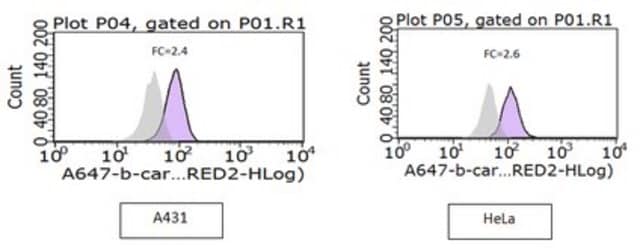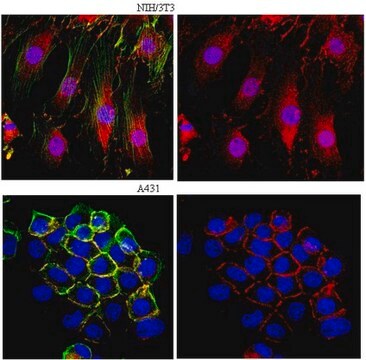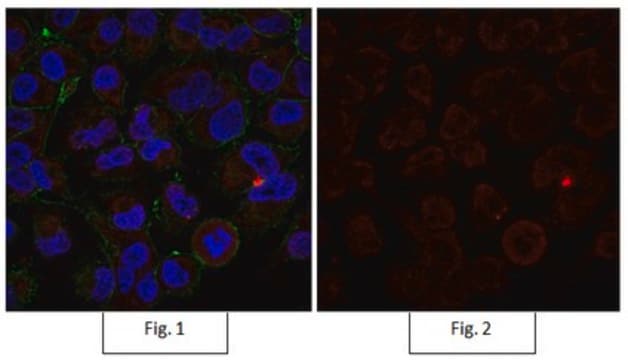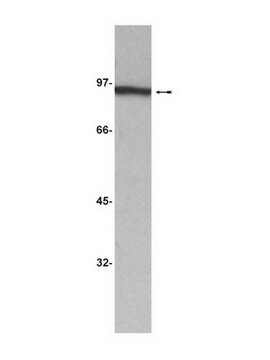06-734
Anti-β-Catenin Antibody
Upstate®, from rabbit
Sinónimos:
catenin (cadherin-associated protein), beta 1 (88kD), catenin (cadherin-associated protein), beta 1 (88kDa), catenin (cadherin-associated protein), beta 1, 88kDa
About This Item
Productos recomendados
biological source
rabbit
Quality Level
antibody form
purified immunoglobulin
antibody product type
primary antibodies
clone
polyclonal
species reactivity
human, rat, rabbit, bovine, mouse
packaging
antibody small pack of 25 μg
manufacturer/tradename
Upstate®
technique(s)
immunocytochemistry: suitable
immunoprecipitation (IP): suitable
western blot: suitable
isotype
IgG
NCBI accession no.
UniProt accession no.
shipped in
ambient
target post-translational modification
unmodified
Gene Information
human ... CTNNB1(1499)
mouse ... Ctnnb1(12387)
rat ... Ctnnb1(84353)
Categorías relacionadas
General description
β-Catenin is composed of three domains: a central armadillo repeat domain and two N- and C-terminal tails. β-catenin can be phosphorylated by serine-threonine kinase, such as GSK-3. The phosphorylated β-catenin affects the protein association of β-catenin to E-cadherin and α-cateinin that occurs in the cell. This process can be reversed by de-phosphorylation of β-catenin.
Specificity
Immunogen
Application
5 μg of a previous lot immunoprecipitated β-Catenin from 500 μg of A431 membrane fraction lysate.
Immunocytochemistry:
1-5 μg/mL of a previous lot showed positive immunostaining for β-catenin at cell-cell junctions of A431 cells fixed with 4% paraformaldehyde and permeabilized with 0.25% Triton™ X-100.
Immunocytochemistry Analysis: A 1:100 dilution of this antibody detected beta-Catenin in A431 and HUVEC cell lines.
Epigenetics & Nuclear Function
Transcription Factors
Quality
Western Blot Analysis:
0.1-1 μg/mL of this lot detected β-catenin in an A431 total cell lysate.
Target description
Physical form
Storage and Stability
Handling Recommendations: Prior to removing the cap, centrifuge the vial and gently mix the solution.
Analysis Note
Positive Antigen Control: Catalog #12-301, non-stimulated A431 cell lysate. Add 2.5µL of 2-mercaptoethanol/100µL of lysate and boil for 5 minutes to reduce the preparation. Load 20µg of reduced lysate per lane for minigels.
Other Notes
Legal Information
Disclaimer
Not finding the right product?
Try our Herramienta de selección de productos.
Optional
Certificados de análisis (COA)
Busque Certificados de análisis (COA) introduciendo el número de lote del producto. Los números de lote se encuentran en la etiqueta del producto después de las palabras «Lot» o «Batch»
¿Ya tiene este producto?
Encuentre la documentación para los productos que ha comprado recientemente en la Biblioteca de documentos.
Nuestro equipo de científicos tiene experiencia en todas las áreas de investigación: Ciencias de la vida, Ciencia de los materiales, Síntesis química, Cromatografía, Analítica y muchas otras.
Póngase en contacto con el Servicio técnico








